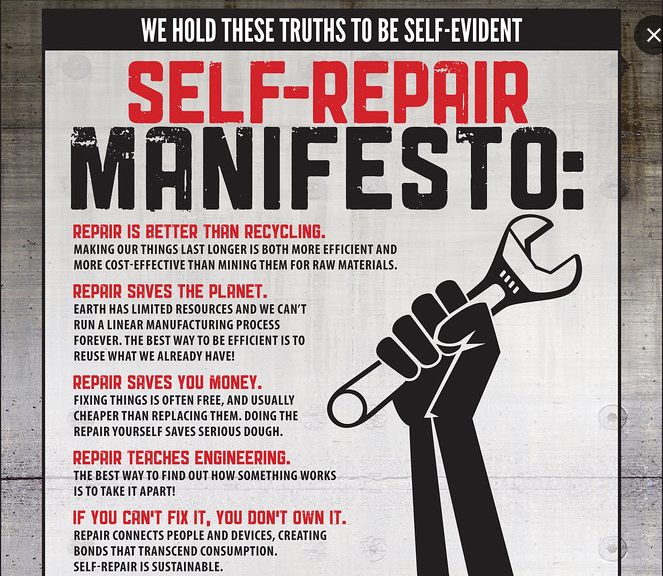


Global Opinion on Climate Change
21 September 2023
Restorative Justice in Ordinary Rape Cases
21 September 2023What are the foundations and goals of the European Green Deal? What impact will it have on agriculture and consumers? What are the obstacles to its implementation? Interview with Sandrine Levasseur, researcher at the French Economic Observatory (OFCE).
What is the European Green Deal? And what are its objectives?
Launched in December 2019, the European Green Deal is a European Union (EU) initiative aimed at making Europe the first carbon-neutral continent by 2050. In other words, by this date, human emissions of greenhouse gases (GHGs) and captures by natural sinks (oceans, soils, vegetation) must be balanced. This goal of carbon neutrality is fully aligned with the Paris Agreement signed in 2015 that seeks to keep global warming below 2° C above pre-industrial levels.
The Green Deal also sets an interim target of a 55% reduction in GHG emissions by 2030 compared with 1990 levels – a target that must be achieved in less than 7 years! The magnitude of the task is even greater when one considers that since 1990, GHGs have been reduced by 33%: reaching the 2030 target will require tripling current efforts!
More specifically, the Green Deal defines a set of mutually complementary climate and environmental objectives aimed at improving our health, nutrition and well-being. The cross-sector approach involves all EU sectors and players, including households.
What is the specific role of agriculture in achieving the Green Deal’s objectives?
Agriculture is both an important component and a key player in the Green Deal. The EU’s agricultural sector accounts for around 12% of GHGs and, unlike other sectors, has not seen a decline in GHGs over the past decade. Since 1990, the decline of GHGs in the agricultural sector has been ‘only’ 21%.
The sources of emissions in agriculture are well known: just over 40% come from enteric fermentation or, more prosaically, the methane emitted by ruminants; just under 40% come from the use of agricultural land; the remainder (15%) is attributable to the production of effluents, mainly manure.
The role of methane (CH4) is key, since in terms of greenhouse effect (i.e. warming power), it is 25 times more potent than carbon (CO2). Hence the somewhat simplistic idea that some have floated of killing cows to help address global warming!
While a less meat-based diet seems necessary to achieve our climate and environmental objectives, other levers need to be considered, ranging from a change in agricultural practices (i.e. less use of synthetic pesticides and fertilisers, diversification of crop rotation) to the reduction of waste via the development of technical and technological innovations (i.e. the use of new crop varieties and digital tools for precision agriculture). Only by activating all these levers is there hope of achieving the goal of carbon neutrality.
How does the Effort Share Regulation (ESR) make sense for each European country?
Somewhat subtly, the EU has set GHG reduction targets for the EU as a whole, as well as for individual sectors (transport, industry, etc.). For some sectors, including agriculture, the EU has defined a contribution to the effort for each country based on its wealth as measured by GDP per capita (with the understanding that rich countries must contribute more) and a cost-effectiveness analysis (based on vaguer criteria that seek to maintain relative food security for each member country).
GHG reduction is neither economically nor socially neutral: it has a ‘cost’ and, beyond unequal living standards, EU countries also differ in their agricultural structures and practices. To put it simply, Western European agriculture is intensive, i.e. it heavily uses fertilisers and pesticides, is highly mechanised, and high- to very high-yielding. Conversely, in the Eastern countries of the former Soviet bloc, agriculture uses fewer chemical inputs and is more labour-intensive. Agricultural employment accounts for almost 15% of total employment in Romania and 9% in Poland, compared with 1.2% in Germany and 2.6% in France. Yields in Eastern Europe are not poor but are lower than in the West. Imposing the same GHG reduction targets in agricultural sectors operating at such different levels therefore would have disproportionately negatively affected the EU’s Eastern members and jeopardised their food security.
Under the Effort Sharing Regulation (ESR), the agricultural sector’s target for reducing GHG emissions by 2030 ranges from 10% (Bulgaria) to 50% (Sweden, Luxembourg, Germany, Finland and Denmark), with France’s target set at 47.5%.
Isn’t it paradoxical that the major agricultural countries in the EU are not necessarily those whose agriculture contributes most to global warming?
It is indeed interesting to note that the major agricultural countries are not necessarily those whose agricultural sector emits the most GHGs and, more generally, that there is a certain disconnect between a country’s share of EU agricultural production and its share of GHGs from agriculture. For example, France and Italy each account for 18% of the agricultural value produced in the EU, but France emits twice as many GHGs as Italy! While this may be attributable to different agricultural practices, it is primarily specialisation in cattle herds that ‘makes all the difference’: France has 31 million head of cattle, compared with 12.2 million in Italy! In another example, Ireland is a ‘small’ agricultural power (8.5% of the EU’s agricultural value) but a major GHG emitter since its cattle herd is equivalent to that of Italy. Because a significant share of Ireland’s beef production is used to supply non-EU markets, notably the UK, the Green Deal will affect Ireland’s export power. The situation in France is different, as the French consume more or less all their domestic production, and also import beef…
What about From Farm-to-Fork and Biodiversity strategies?
These two strategies operationalise the Green Deal in the agricultural sector. They define the quantitative targets that member states must meet in order to reduce GHG emissions in the agricultural sector and restore biodiversity: a reduction of at least 20% in the use of chemical fertilisers; a 50% reduction in the use of pesticides and antimicrobials; an increase in the area dedicated to ‘organic’ crops, so that they represent 25% of cultivated land; restoration of biodiversity on 10% of land, etc.
Although European consumers are increasingly concerned about access to quality food, current events show that the farming world is resistant to ‘changing the playbook’. In particular, the elimination of pesticide products such as neonicotinoids is a source of significant tension in France, as well as other EU countries. Similarly, data withholding (notably related to the use of chemical fertilisers) attests to the resistance of part of the farming world and their governments to the implementation of the Green Deal in the agricultural sector.
Is the current inflationary context undermining the health and well-being of Europeans?
During the 2020 Covid-19 outbreak, Europeans were particularly concerned about their health. As a result, consumption of organic products rose sharply. In 2020, each French person spent an average of €188 on organic products, i.e. almost 6.5% of their food budget, and 11% more than in 2019. In the second half of 2021, however, consumption of organic products began to decline, due to a combination of two factors. The first is the decline of household purchasing power due to rising energy and food prices. The second is the proliferation of labels (i.e. ‘sustainable’, ‘fair trade’, ‘eco-responsible’, etc.(1)See in particular the results of research conducted at Sciences Po’s Center for the Sociology of Organizations written up for Public Health France in 2018 – “The sociologist’s perspective” on the controversy over nutritional logos. Controverse sur les logos nutritionnels « le point de vue du sociologue ») confusing consumers and spreading their consumption over alternatives to ‘organic’. In short, the demand for organic products is currently more problematic than the supply. The European Commission is currently considering clarifications to labels to improve consumer information. This is welcome, but should not obscure the determining variable for food: price. Organic products generally cost 50–70% more than conventional products! The budgetary challenge squarely hits lower-income households seeking to consume healthier products.
How does the persistent use of certain pesticides affect our 2030 targets?
Legislation on the use of glyphosate and neonicotinoids illustrates difficulties in implementing the Green Deal in the EU agricultural sector. Glyphosate – the world’s most widely used herbicide, contained in Monsanto’s Roundup (acquired by Bayer) – is the subject of bitter debate in the EU each time its authorisation is renewed. While opponents argue that it is ‘probably carcinogenic’, citing the International Agency for Research on Cancer (IARC), the European Food Safety Authority (EFSA) deems it ‘probably not carcinogenic’. In July 2023, the European Council will decide whether or not to extend its authorisation for the next five years. This will be an important milestone for the Green Deal, as the stance taken by the EU heads of state will be indicative of their willingness (or not) to operationalise it. The neonicotinoid problem is at a more advanced stage, since both the European Court of Justice (in January 2023) and the European Council of State (in May 2023) ruled that the waivers France had secured for sugar crops in 2021 and 2022 were illegal.
What do you think are the true prospects for the agricultural Green Deal?
The Green Deal sets ambitious climate and environmental targets for the EU. There is still a long way to go before it is implemented in all sectors, but agriculture is especially challenging. The objectives are clearly spelled out, but the means of achieving them fall short. Surprisingly, the Common Agricultural Policy (CAP) and its implementation at the member state level via National Strategic Plans (NSPs) does not align with Green Deal targets, both in terms of funding and ‘greening’ incentives. Hopefully, this is just a matter of unfortunate timing, as most of the negotiations around the current CAP took place in 2017 and 2018, prior to the new European Commission’s introduction of the Green Deal in 2019… Without significant reallocation of CAP and NSP funding towards more environmentally friendly agriculture, there is little chance that European farmers will embrace the great cause of combating global warming.
Interview by Sylvie Le Golvan, OFCE
Sandrine Levasseur is an economist at the French Economic Observatory (OFCE). Her work focuses on European integration issues.
Read more
The Green Deal in agriculture (I): a framework, OFCE Blog, January 2023 (in French).
EU food security and strategic independence, in L’économie européenne 2023–2024, Repères, Éditions La découverte (in French).
Notes
| ↑1 | See in particular the results of research conducted at Sciences Po’s Center for the Sociology of Organizations written up for Public Health France in 2018 – “The sociologist’s perspective” on the controversy over nutritional logos. Controverse sur les logos nutritionnels « le point de vue du sociologue » |
|---|



